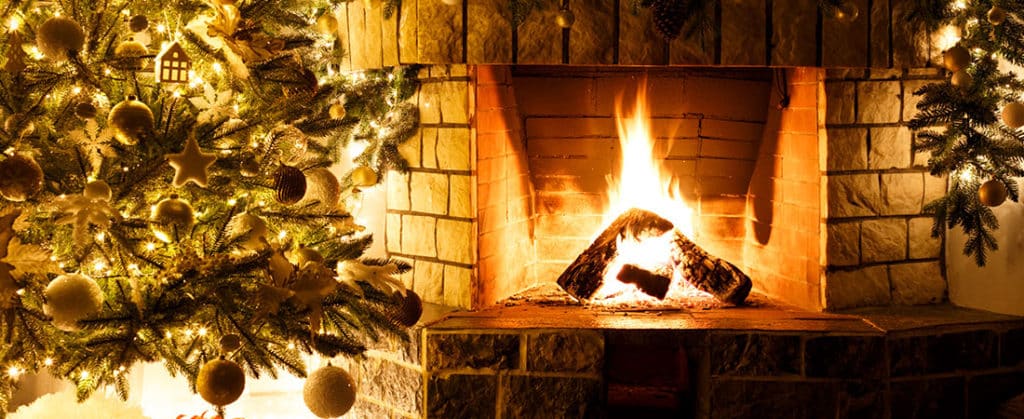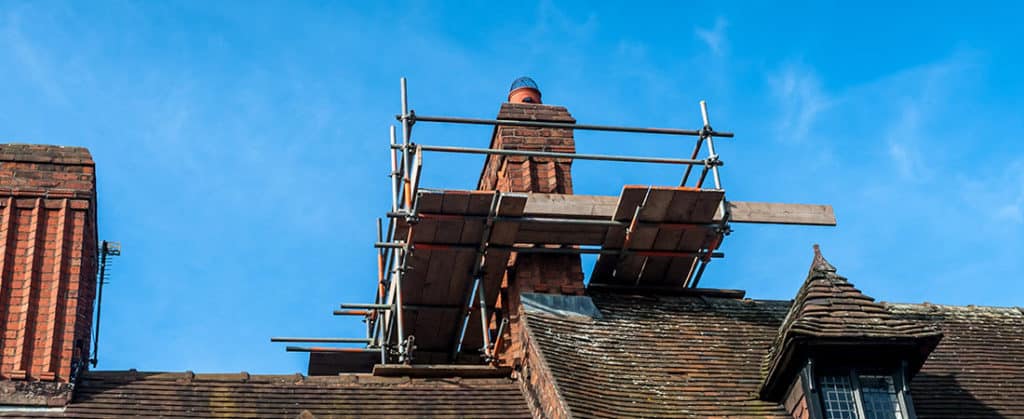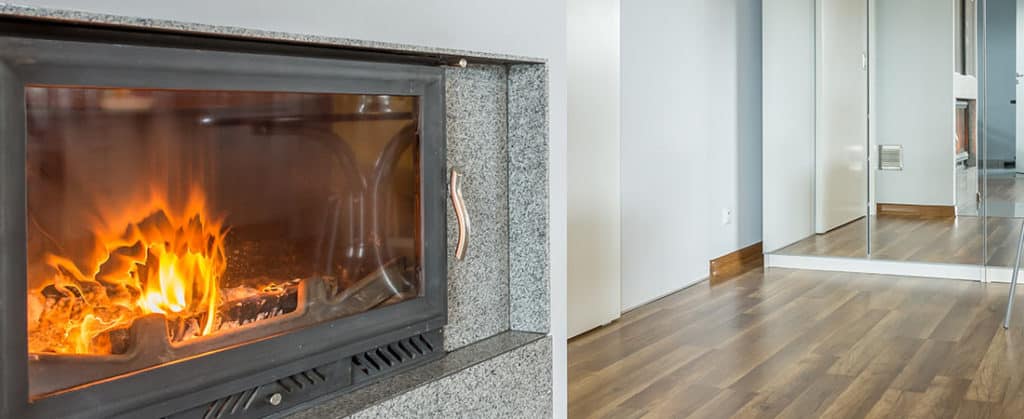There’s nothing like snuggling up close to a raging fire in the winter. That is if you keep your fireplace clean. If you’re staring into a sooty, dark hearth, no amount of hygge will help you relax. If you frequently use your living room fireplace, you know the burning wood will produce ash, soot, and gray smoke, which may even billow inside your home.
Thorough fireplace cleaning should be left to a professional chimney sweep, but that doesn’t mean you can’t spruce up your hearth to keep it from looking like a coal pit. Here are tips to help you prepare your unit for use.
Remove the andirons and grate.
Make sure your fireplace is cool enough before you begin cleaning it. As harmless as it seems, ash can be surprisingly hot, even days later. Set aside the andirons and grate from the fireplace to avoid hurting yourself. You can clean these further with a dish soap and water mixture.
When cleaning the units, scrub accessories made of brass or other tarnished metals with acid polish, such as lemon juice or white vinegar.
Be cautious of debris.
Because fireplace cleaning tends to get dusty, consider using a respirator mask to avoid inhaling soot. To remove the debris off the walls, use a bristle brush. Begin at the top of the hearth and work your way down.
Dislodged debris will fall into the fireplace or stove as you scrub. To clean up the debris from the fireplace or stove, use a vacuum cleaner with a HEPA filter. This process reduces the amount of dust and soot in the air.
Alternatively, carefully remove the debris and deposit it in a pail or heavy-duty garbage bag using a shovel or tongs.
Seal the bucket or heavy-duty trash bag containing the debris to prevent dust or soot from escaping. You should then dispose of the debris in accordance with your local trash disposal standards.
Remove all the ash
Scoop out all of the ash with a fireplace shovel, making sure to have a metal dust can nearby to prevent ash from flying all over the room. You should avoid using a paper bag since the ash may still be hot and create a fire.
Allow the ash to cool completely before handling or disposing of it.
Once the ash has completely cooled, place it in a non-combustible container or bag and dispose of it in accordance with local requirements. Avoid disposing of hot or warm ash with combustible items.
Vacuum the soot
Even if you scoop carefully, dust and ash particles can remain. A handheld vacuum will assist in collecting the remains.
Save your regular vacuum and invest in one explicitly designed for dirty jobs that generate a lot of dust (think drywall projects). In this situation, a vacuum with a fine filter that collects finer particles is the way to proceed.
Wash the glass door
This step does not apply if you are cleaning a wood-burning fireplace. After you replace the grate, you’re done. A glass door serves as a protective barrier in an electric or glass fireplace.
To clean the surface, mix equal parts white vinegar and water, then spray and wipe with a sponge. Try a commercial fireplace glass cleaner for tough stains.
You can get into the corners with a bottle or old toothbrush. Wipe off the surface with a rag or microfiber cloth. Avoid using paper towels, which can snag on corners and catch fire once the glass panel is closed.
How often should you clean your fireplace?
The frequency with which you clean your fireplace is determined by several factors, including the frequency with which you use it and the dryness of the wood. Wet or unseasoned wood will smoke and be “dirtier, so make sure the firewood is dry so it produces less soot.
Using the fireplace daily will result in a filthy hearth. The easiest approach to determine how frequently you should clean a fireplace is to have it professionally cleaned and then maintain it each season. Remember that you should deep clean your fireplace every two to three years.
Besides considering the amount of time you have gone without cleaning the chimney, you also should consider the amount of creosote accumulation. If you observe a considerable buildup of creosote, this is a strong indication that your chimney needs to be cleaned. Creosote can be black, brown, or tar-like.
Foul scents from the fireplace or chimney, particularly during a fire, can also indicate a dirty chimney. It may be time to clean the chimney if you detect strong and unpleasant odors, such as a strong bonfire or a smoky, musty stench.
Animals such as birds, squirrels, and raccoons tend to establish nests or leave garbage within chimneys. If you see animal activity or nesting materials in or around your chimney, have it inspected and cleaned to remove any impediments?
Which is the best way to clean the chimney
Given the technical nature of fireplaces, you should have your chimney comprehensively cleaned by a certified chimney cleaning services Upper Marlboro provider. An electric fireplace requires no additional maintenance as long as the manufacturer’s recommendations are followed.
However, a little Windex and dusting would suffice if you want to clean the glass covering or the area around your fireplaces.
If you’re willing to clean your wood-burning fireplace or at least the bottom of your wood-burning fireplace, follow the above-mentioned formula.
When cleaning the chimney yourself, ensure you have the necessary cleaning equipment, such as a chimney brush, extension rods, drop cloths, protective clothing (goggles, gloves, dust mask), and a HEPA-filtered vacuum cleaner.
You also should observe safety precautions. Put on suitable protective gear such as goggles, gloves, and a dust mask to protect yourself from dust, debris, and soot.
To safely access the roof, use a robust ladder or scaffolding.
After cleaning, inspect the chimney again to verify no blockages, damage, or other problems. If you have cleaned the unit a couple of times and there is still dirt or soot, consider hiring a professional to help with professional cleaning.



